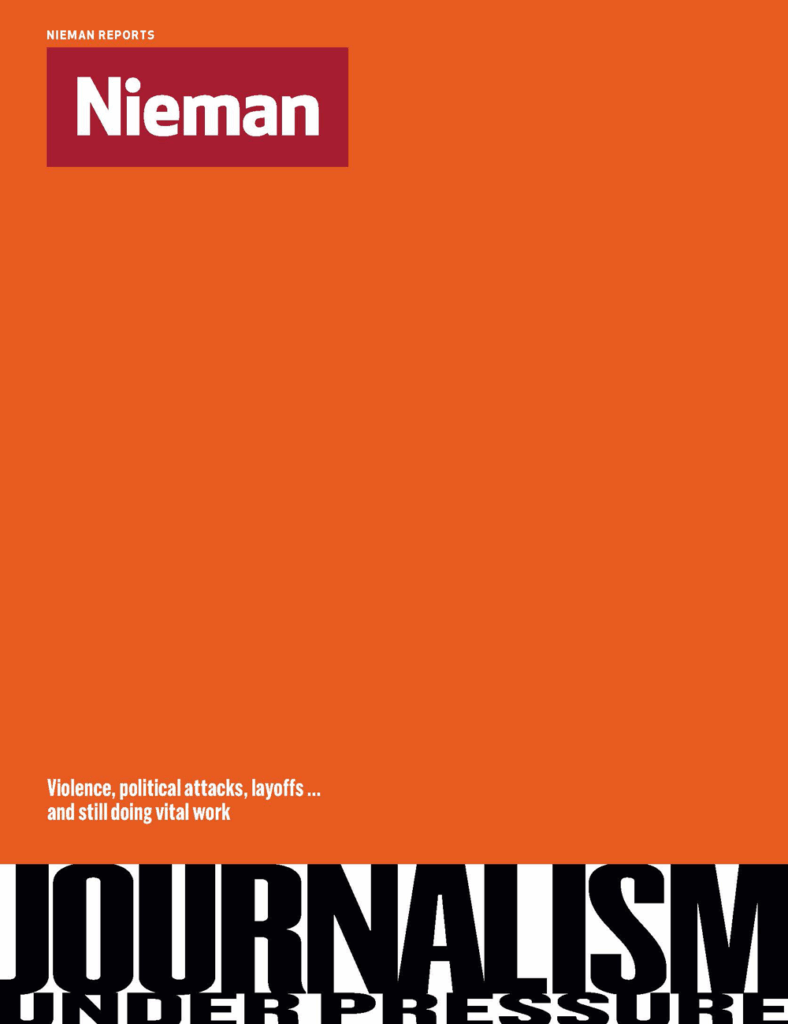Against this backdrop, it’s not as surprising that an editor would take on the role of publisher, too, which I did this summer. In the corporate newspaper world, publishers generally come from the advertising side rather than the newsroom. And, for the record, the best publisher I ever worked for was an ad guy who had a deep appreciation for the important role a newspaper plays in its community.
In my new dual role, I try to bring his same sensibilities to the challenging financial times facing the Advocate and every newspaper. I am learning to look even harder for new revenue streams while still honoring the integrity of an independent newsroom. As has happened with every U.S. newspaper, our print circulation has declined, but our readership remains high as ever through digital delivery.
In my search, I lean on the principles promoted in “Saving Community Journalism” by Penelope Muse Abernathy. She writes about the need to succeed on multiple platforms: print, digital, and social. This is why the Advocate’s reach remains dominant in our Crossroads region: Along with our daily print circulation, we have 3 million monthly page views at VictoriaAdvocate.com and almost 50,000 Facebook followers in a city of 65,000 people.
As editor and publisher, I have no qualms about telling a local furniture store owner why he needs to be advertising on all three platforms to get the maximum reach for his ad dollars while at the same time letting him know we’re going to report fairly the other side of his beef with the city’s code enforcement. We all know the stories about advertisers trying to exercise pressure on newspapers to get favorable coverage, but I haven’t seen that as publisher yet. Of course, I have the benefit of having been editor here for more than 11 years and knowing well most of the players.
Even more important is how deep the newspaper’s ties to the community run. Owners John Roberts and Catherine McHaney have served on just about every board and given in countless ways to the community. Victorians know their local newspaper is not some carpetbagger sending profits to headquarters out of state.
For them and everyone at the Advocate, I feel a tremendous obligation to find a path to a more stable financial future. We have to look for creative ways to fund our journalism, which is why we’re part of Report for America, a nonprofit that, along with an anonymous community member, pays for two-thirds of this year’s salary for reporter Ciara McCarthy. In addition, we must get a stable source of revenue from our subscribers, which is why we recently took the long-overdue step of adding a metered paywall to our website. As always, we must listen intently to our community, which is why we’ve been broadcasting live our news meetings for the past 10 years, and be true to our core values, which is why our newspaper ethics board meets monthly. For community newspapers like the Advocate, reader engagement is not a new industry buzzword—it’s how we’ve long operated. That’s why readers routinely respond with comments to our livestream news meetings and offer story tips via Facebook or at the grocery store.
McCarthy’s work in our newsroom allowed us to produce the first installment of “Hidden in Plain Sight,” an in-depth look at income inequality worsened by Hurricane Harvey. Our commitment to representing the public compelled us to sue the nearby Calhoun Port Authority for violating the Texas Open Meetings Act by hiring disgraced congressman Blake Farenthold with no public notice. Our emphasis on investigative reporting led reporter Jessica Priest to uncover the Calhoun port board’s serious conflicts of interest that led to Farenthold’s hiring as a lobbyist.
I can’t imagine our community without its Advocate. As editor and publisher, it’s my job to be sure our readers and advertisers feel the same way.




